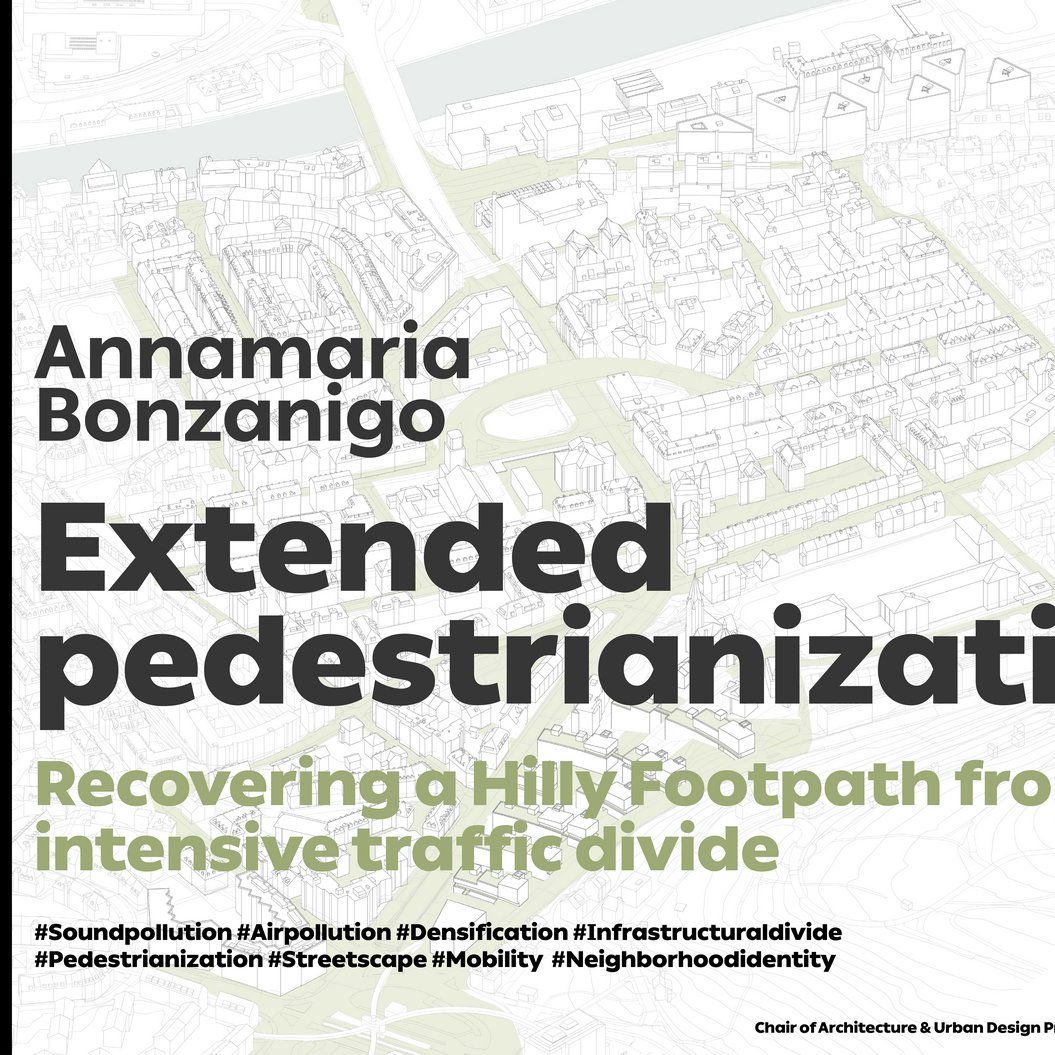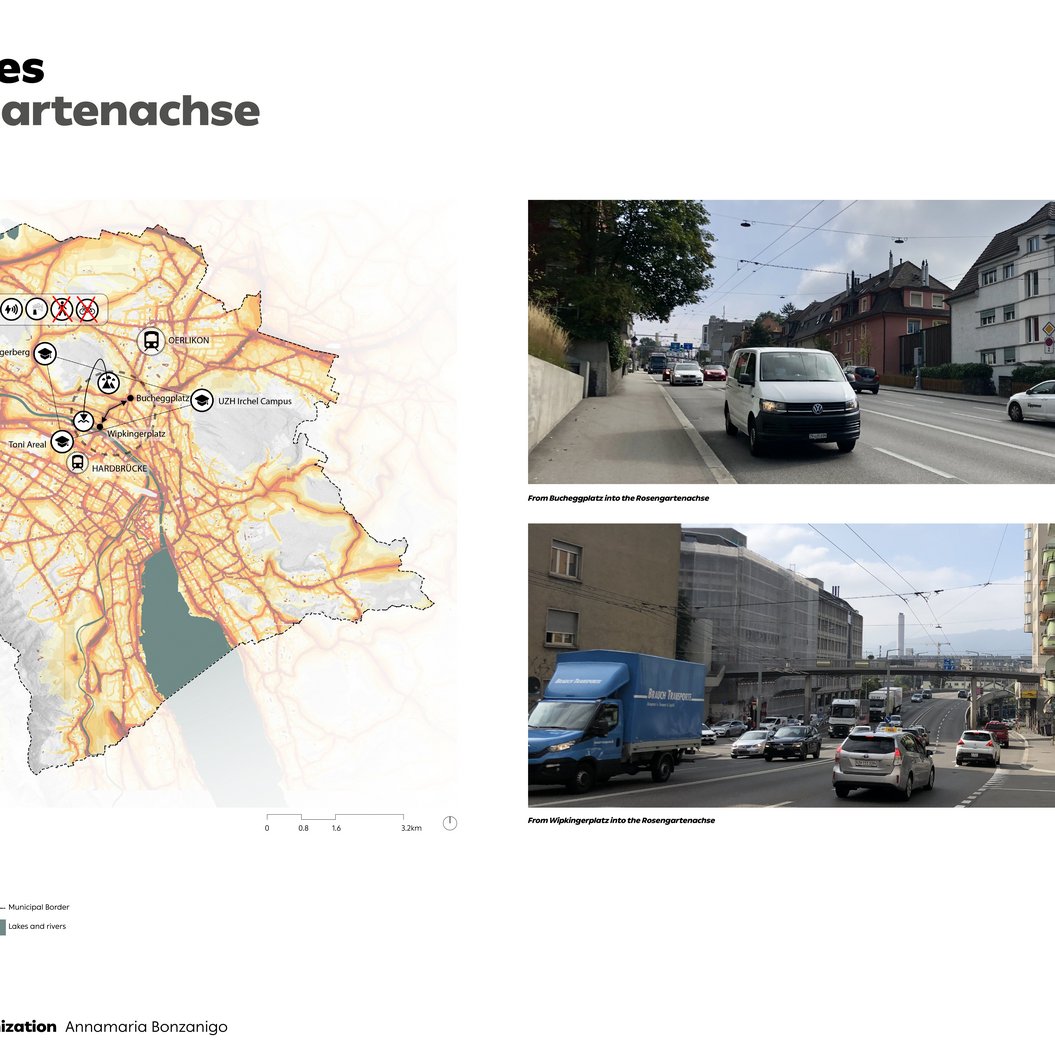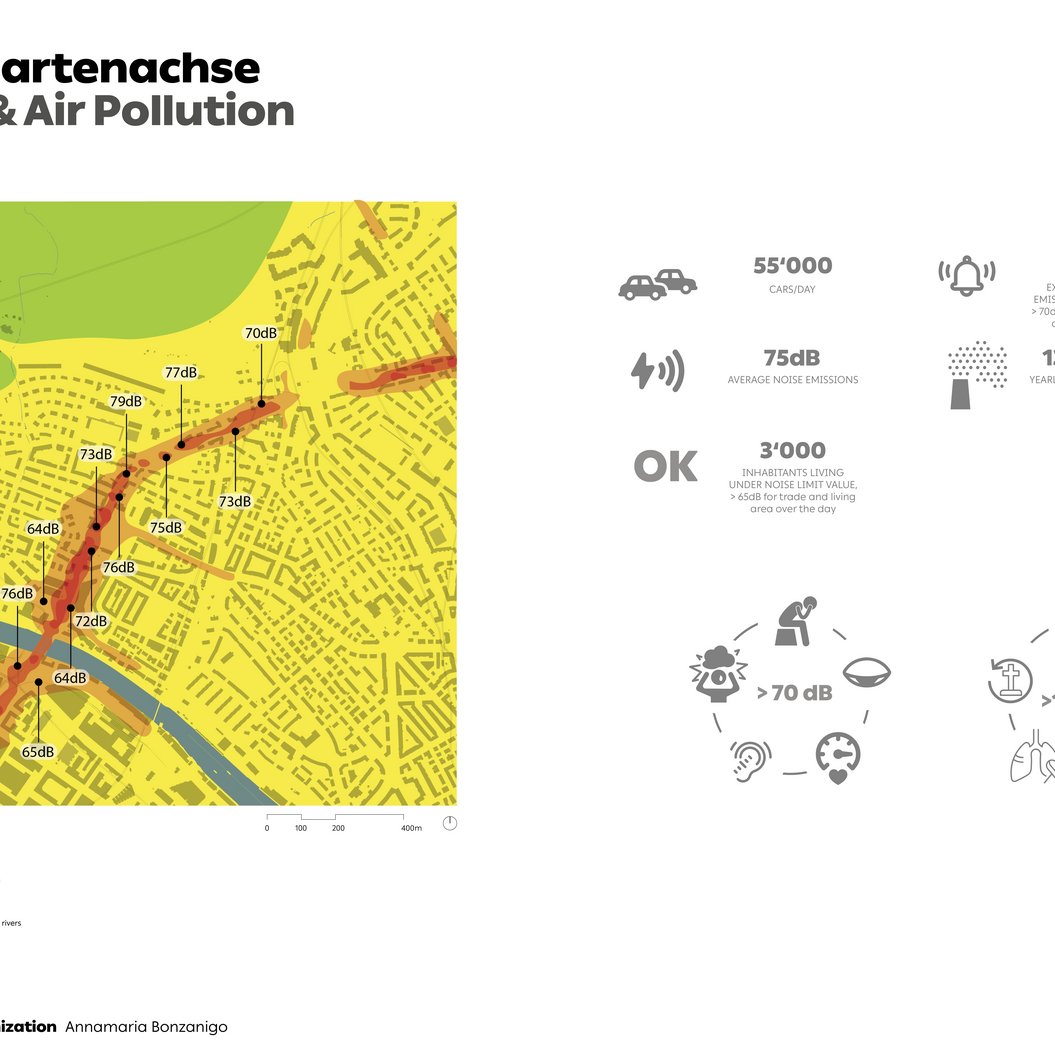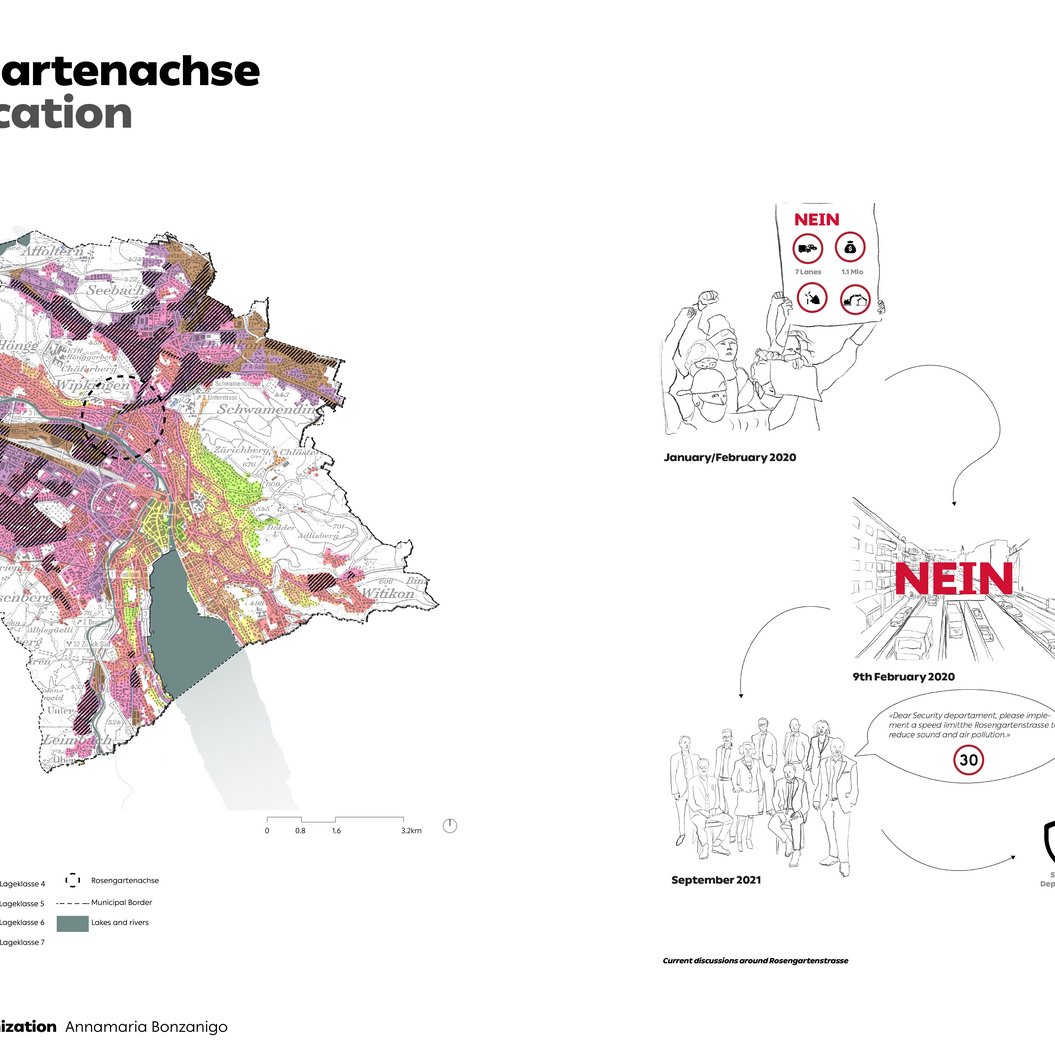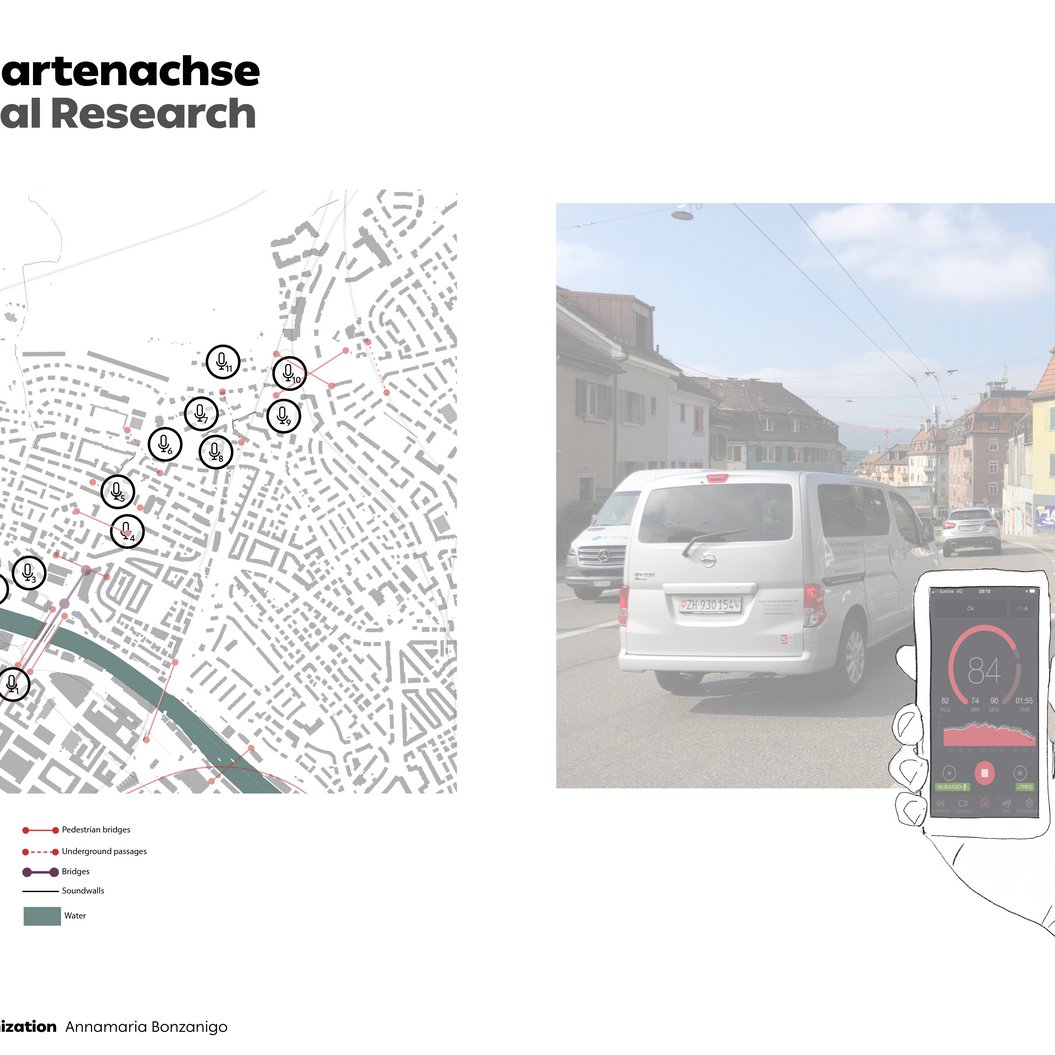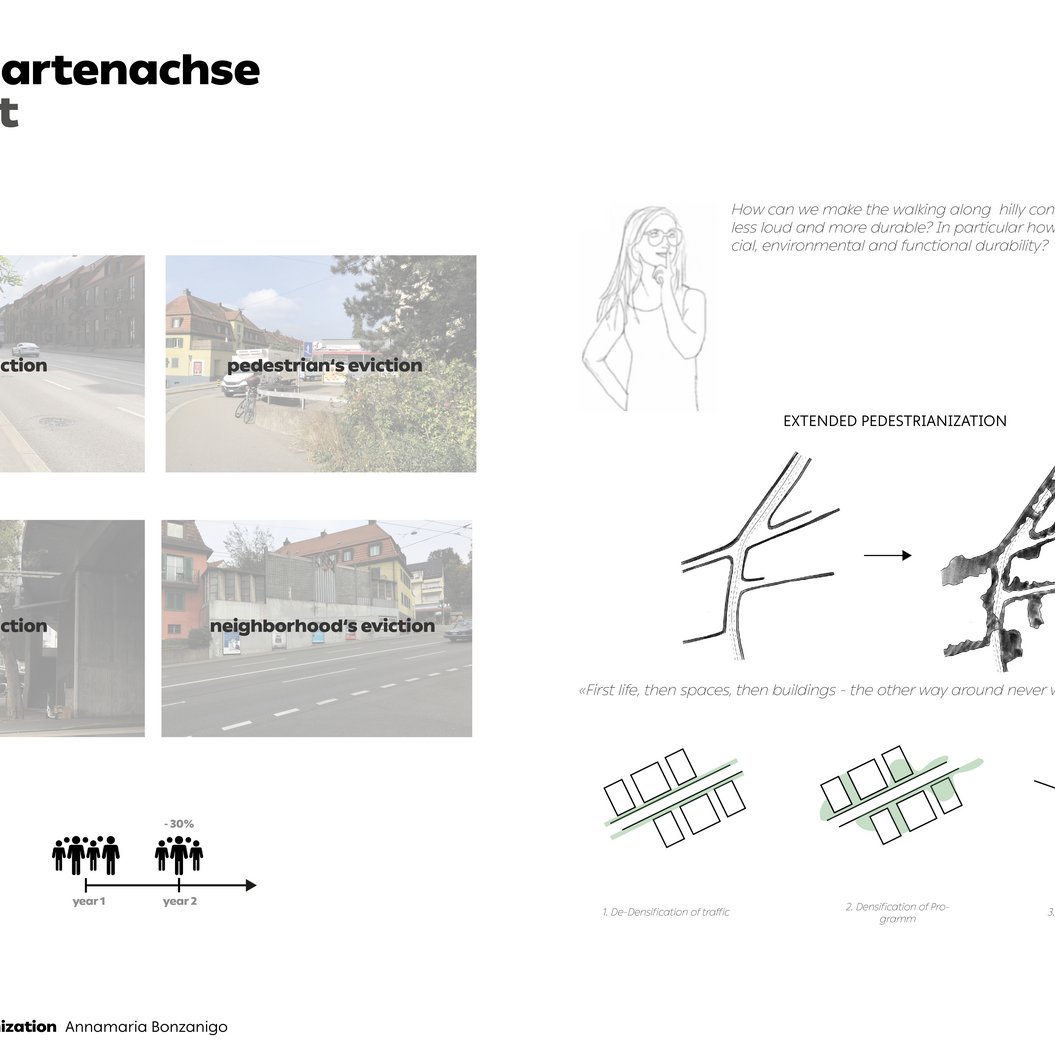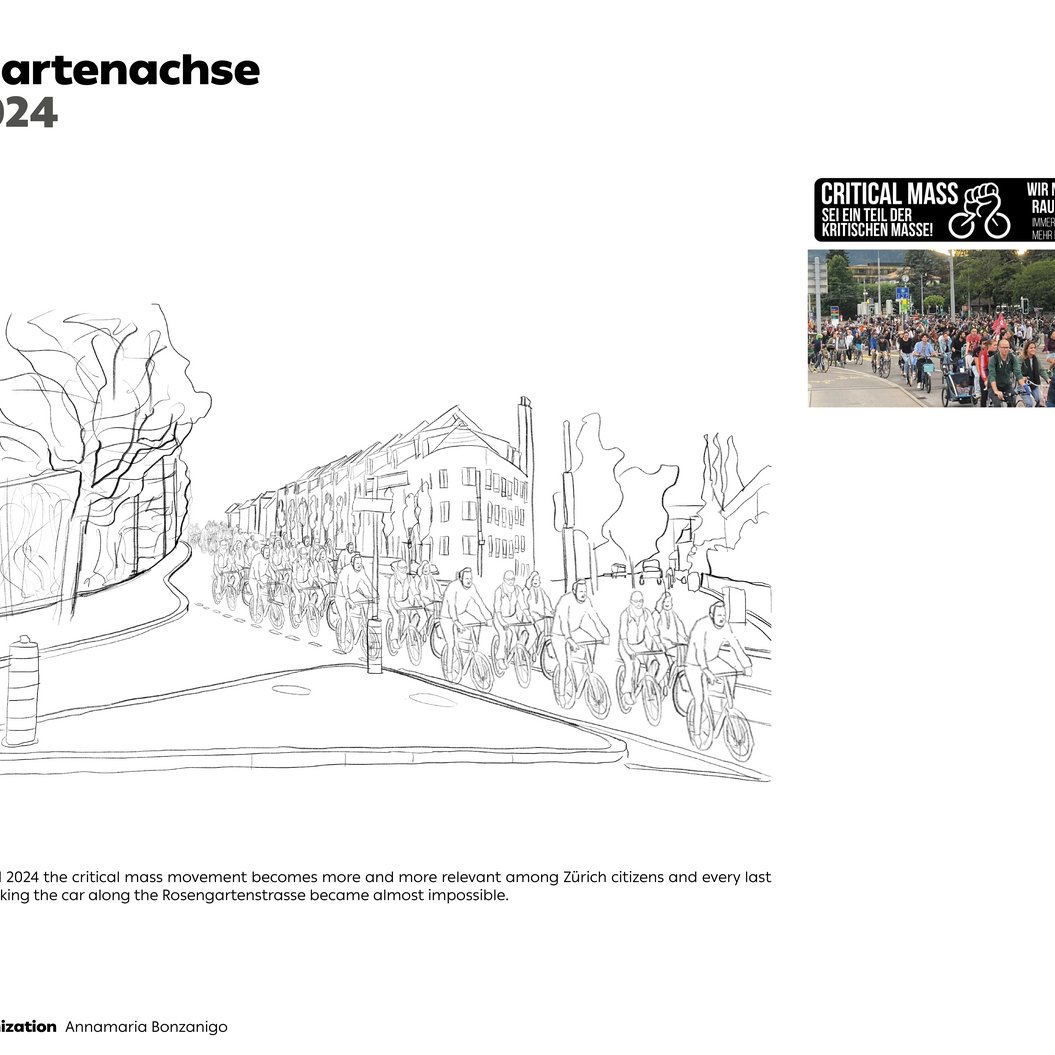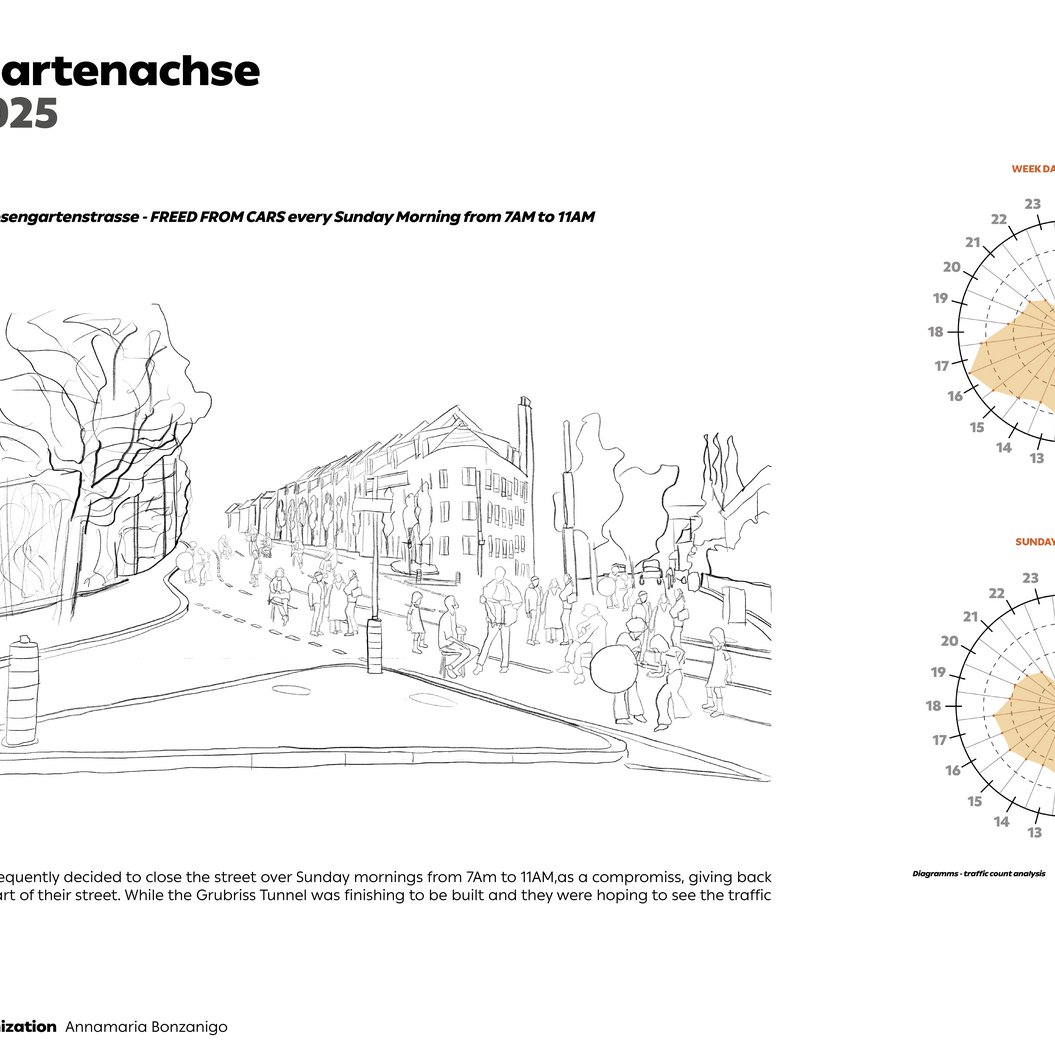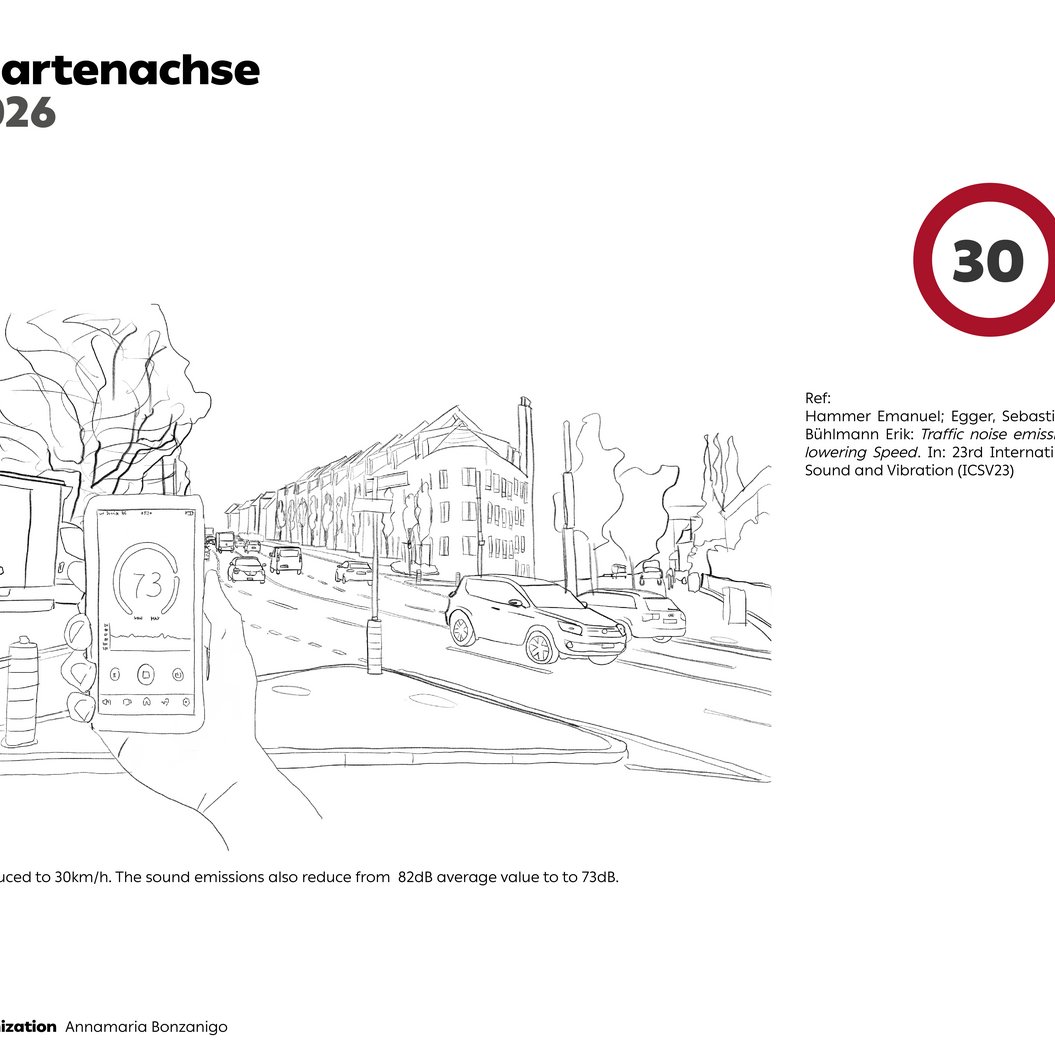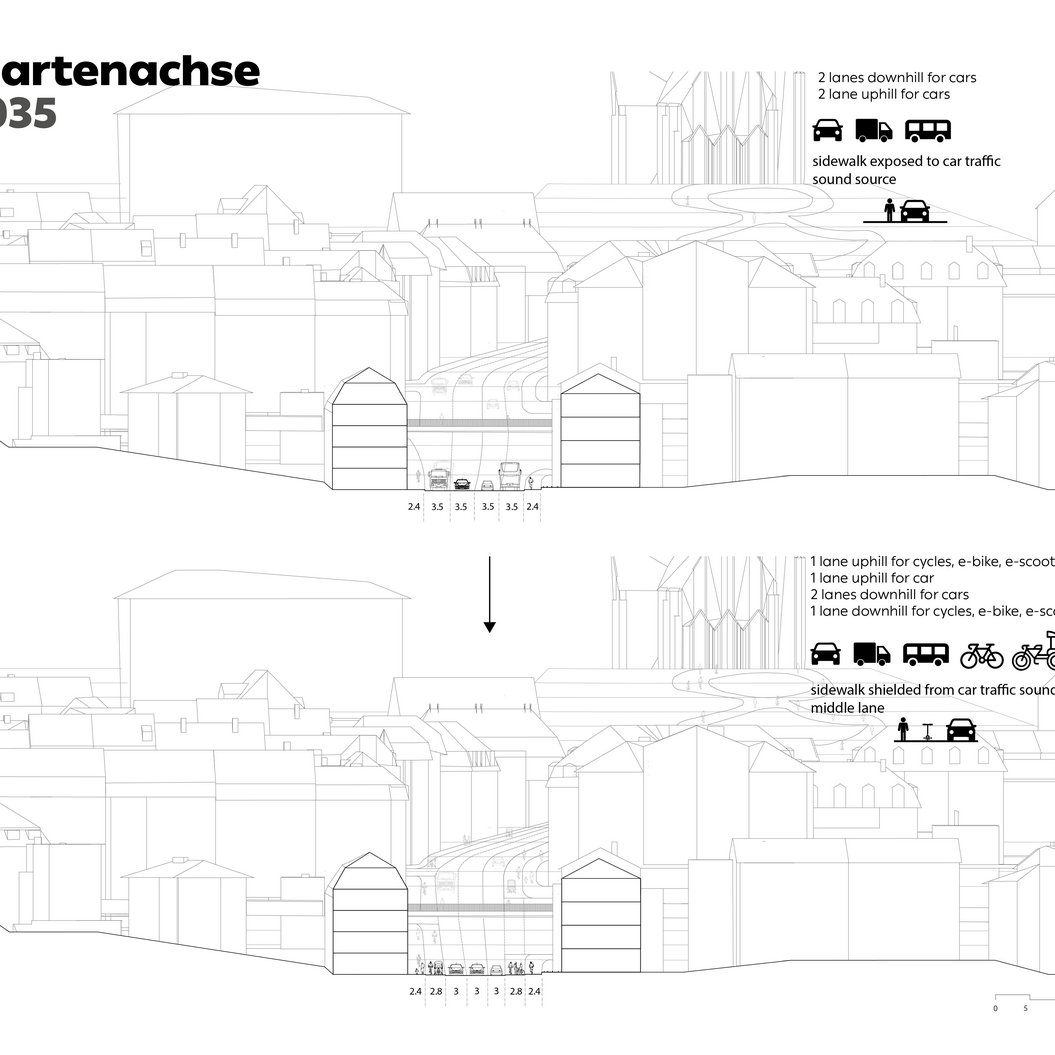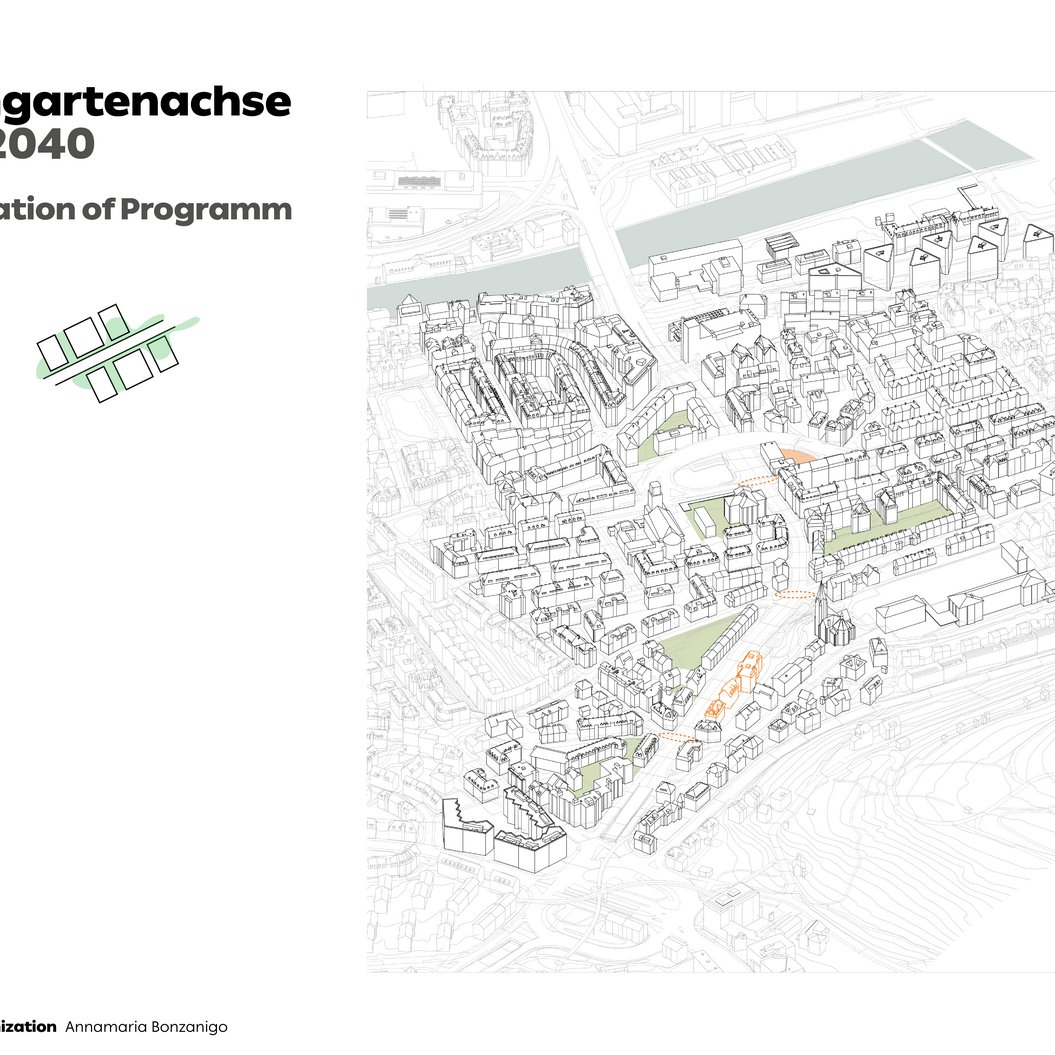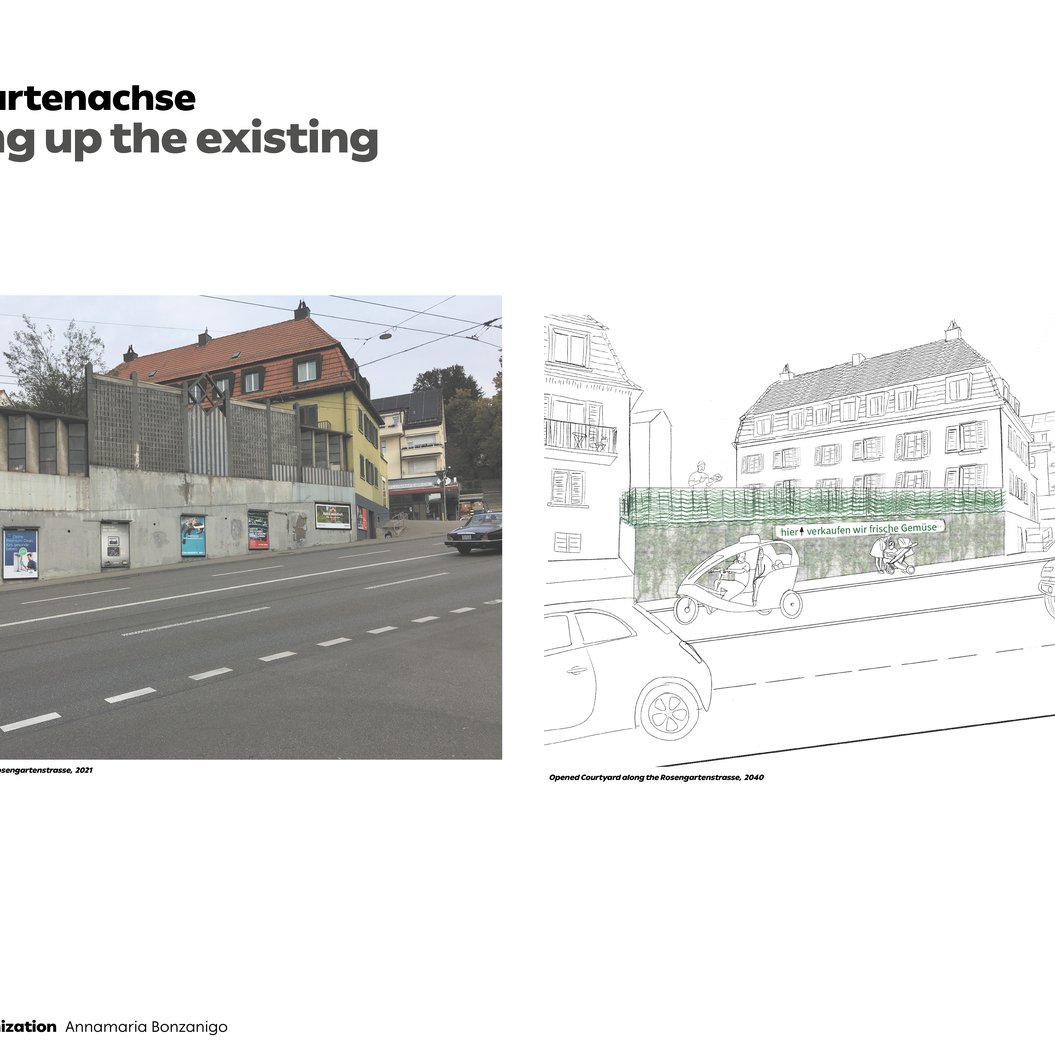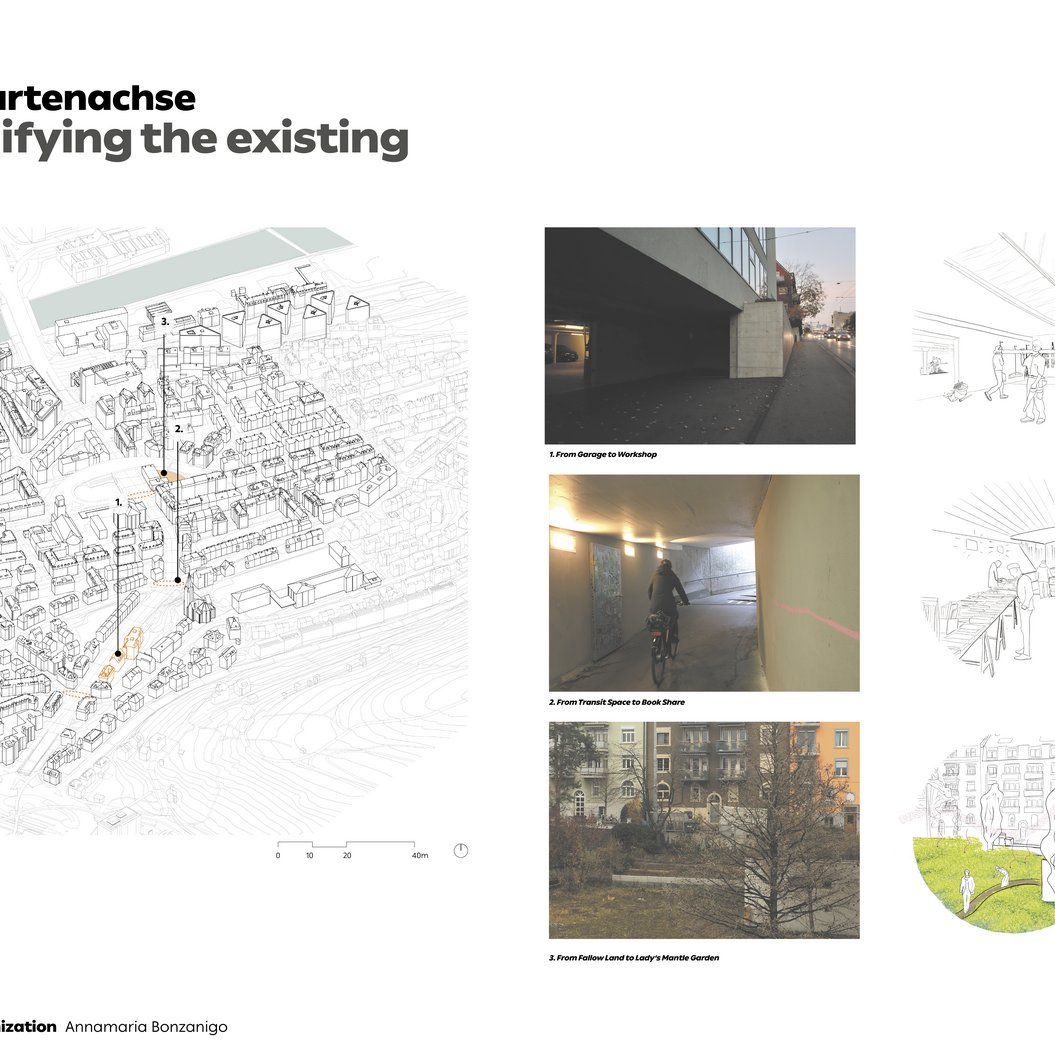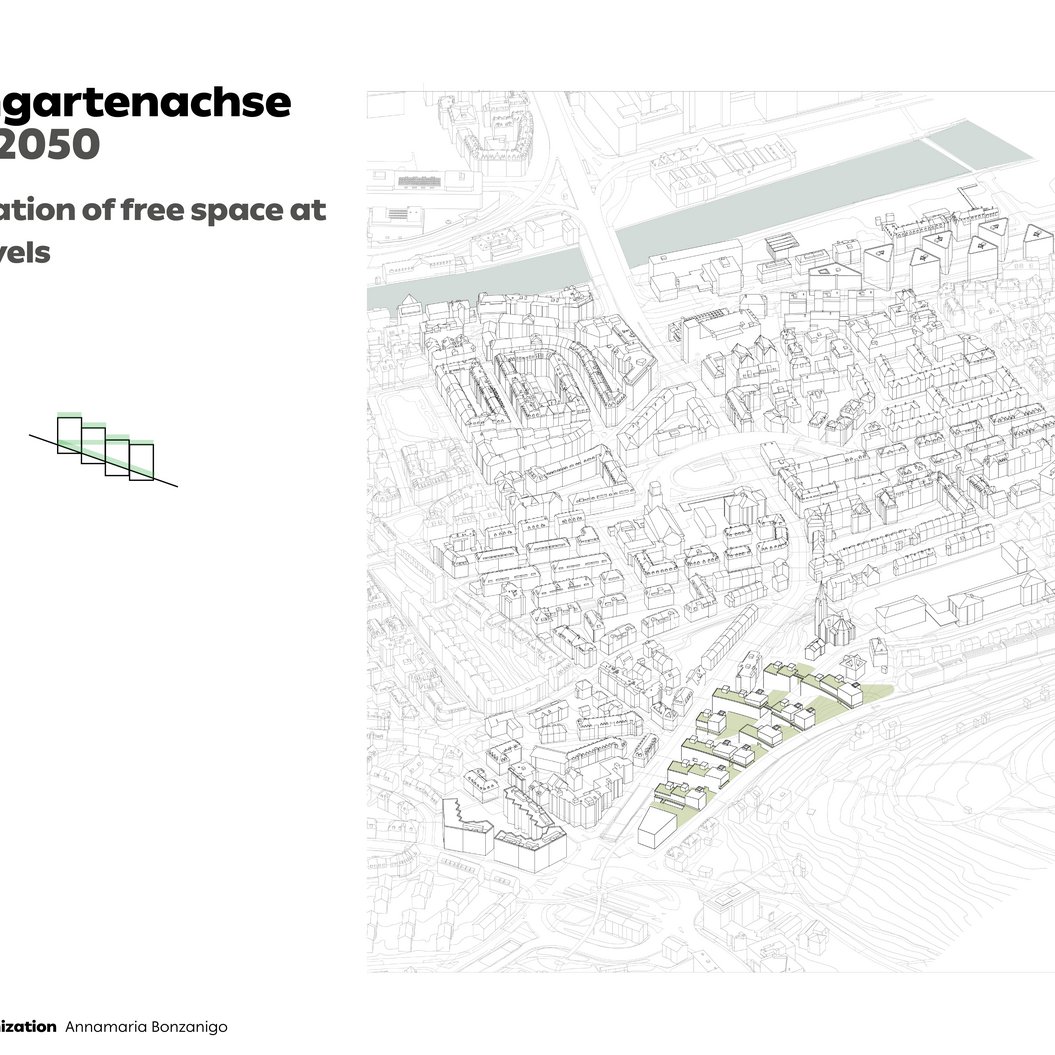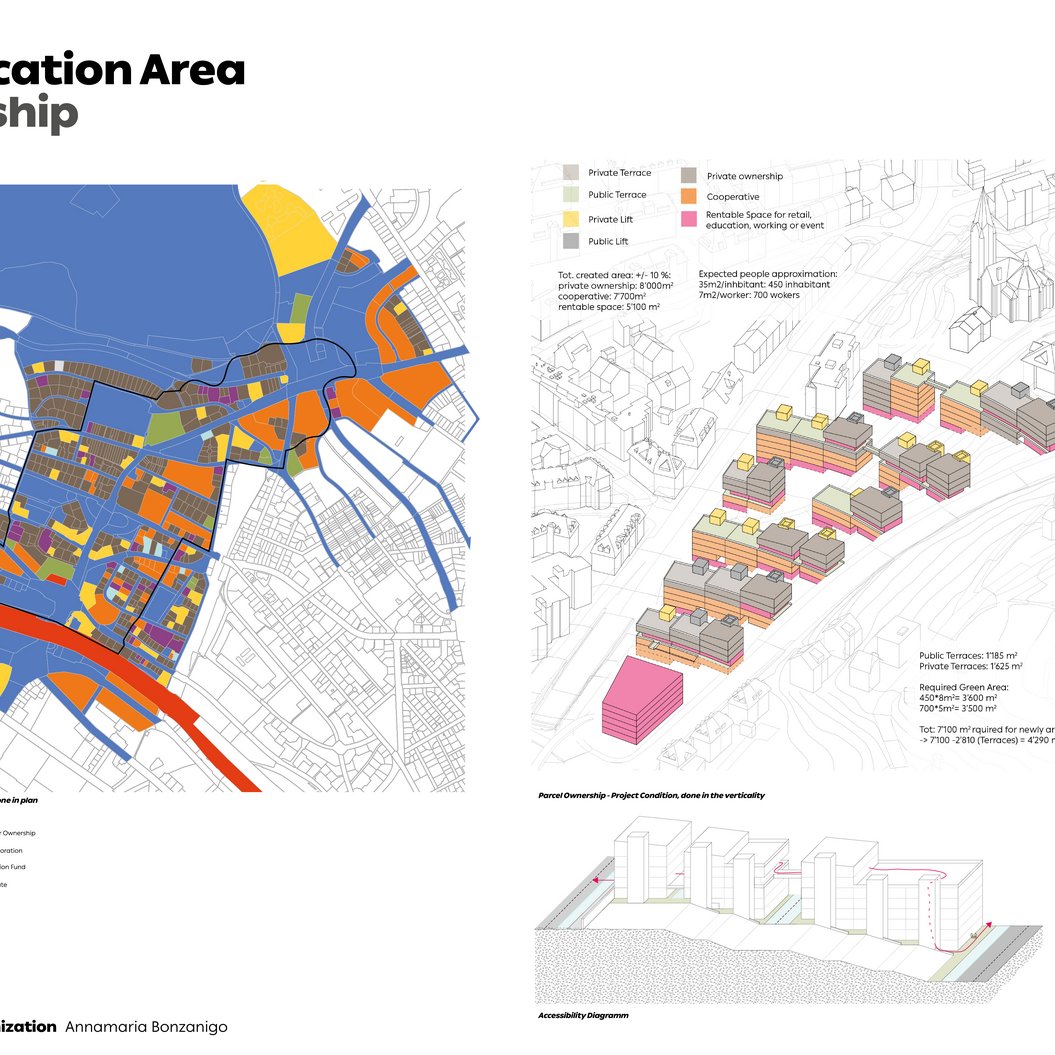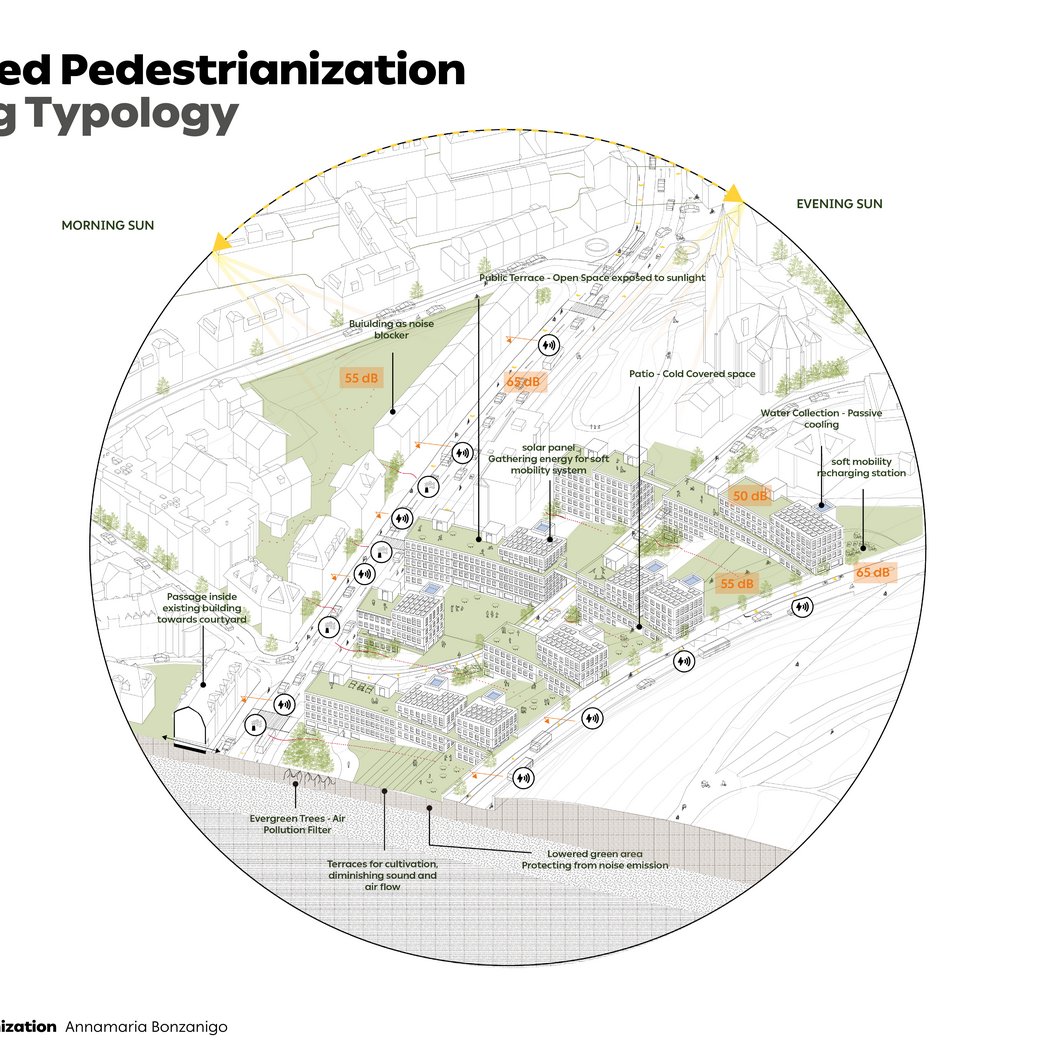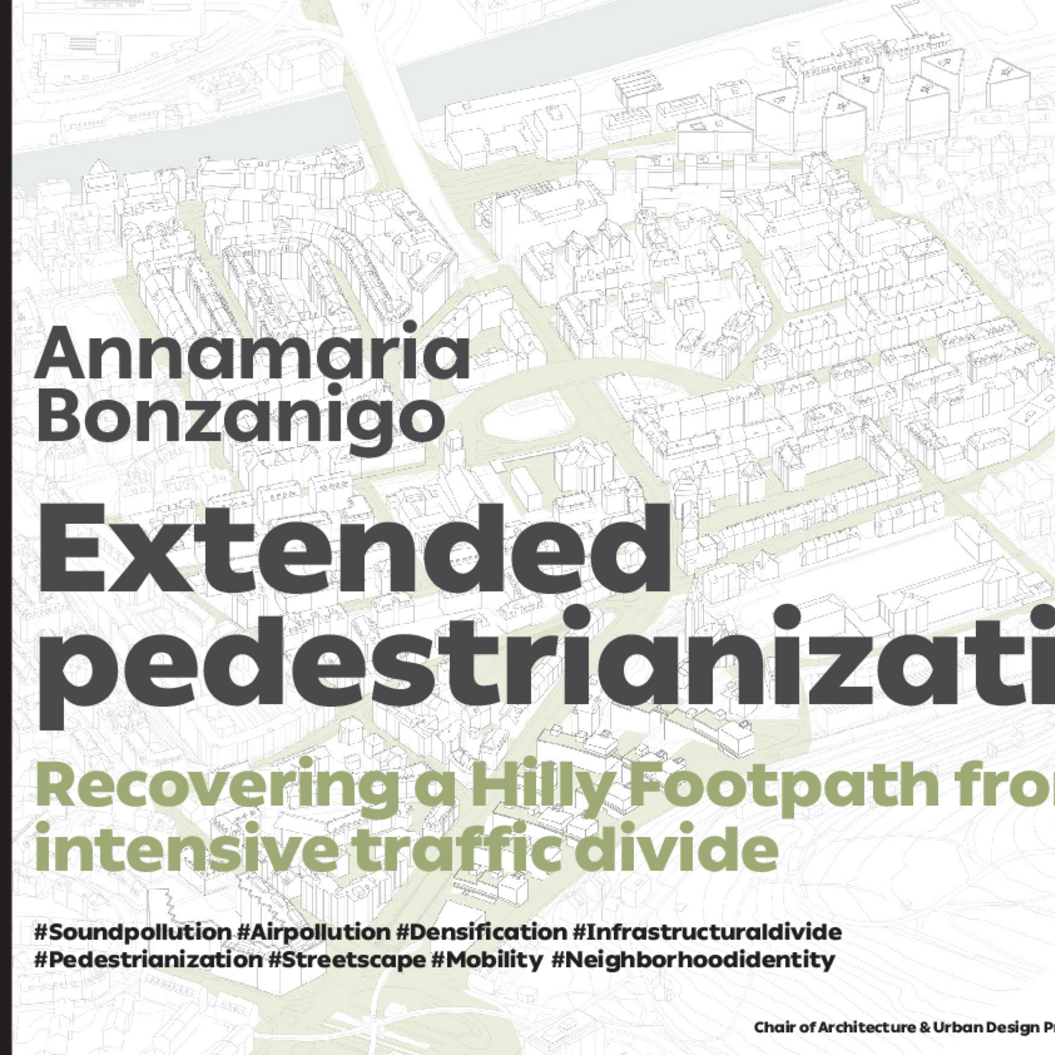Annamaria Bonzanigo
EXTENDED PEDESTRIANIZATION - Recovering a hilly footpath from intensive Traffic Divide
Chair of Architecture and Urban Design
Prof. Hubert Klumpner
SDG 3.9 : By 2030, substantially reduce the number of deaths and illnesses from hazardous chemicals and air, water and soil pollution and contamination.
The Rosengartenachse lies on a slope, on the sunny side of the Käferberg. It has the potential to directly connect mountains to river and it is a strategic axis connecting students from the three universities of Zürich. However, the congested traffic makes the street so loud and the air so bad that it becomes extremely unattractive for pedestrians to walk through.
-
Professor
Hubert Klumpner
-
Assistants
Anne Graupner, Diogo Figueiredo
-
Details
The circulation causes an average of sound emissions of more than 75 dB. 3’000 inhabitants are exposed to limit values of sound emission and 1’000 inhabitants to alarm values. A frequent exposure to more than 70dB can cause disease such as hearing loss, stress, high blood pressure, sleep disturbances and depression.
Multiple infrastructures are currently being built to protect inhabitants and pedestrians from those high levels of sound emission. However, those infrastructures only enhance the divide between street and sidewalk.
So came to my mind the question: How can we make the walking along city’s hilly highly congested traffic corridors less loud and more durable? In particular, how can we enhance social, environmental and functional durability?
I believe the act of walking in a city is not limited to a sidewalk at groundlevel, it can be extended in multiple directions, vertically and horizontally, especially in areas where the topography is accentuated, which would strongly diminish the exposure of the pedestrian to sound and air pollution. I propose the concept of an extended pedestrianization. A pedestrianization in three steps: a de-densification of traffic, a densification of program and a densification of public space at multi levels.
As said Jan Gehl: “ First life, then spaces, then buildings - the other way around never works.”
